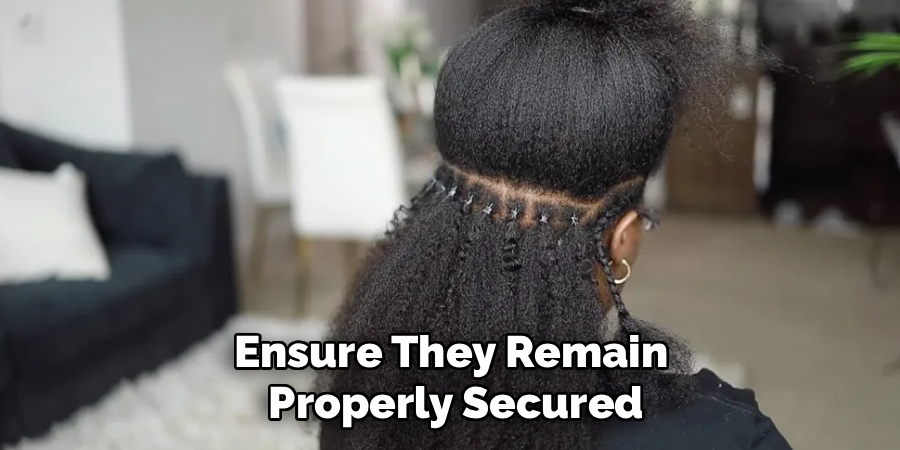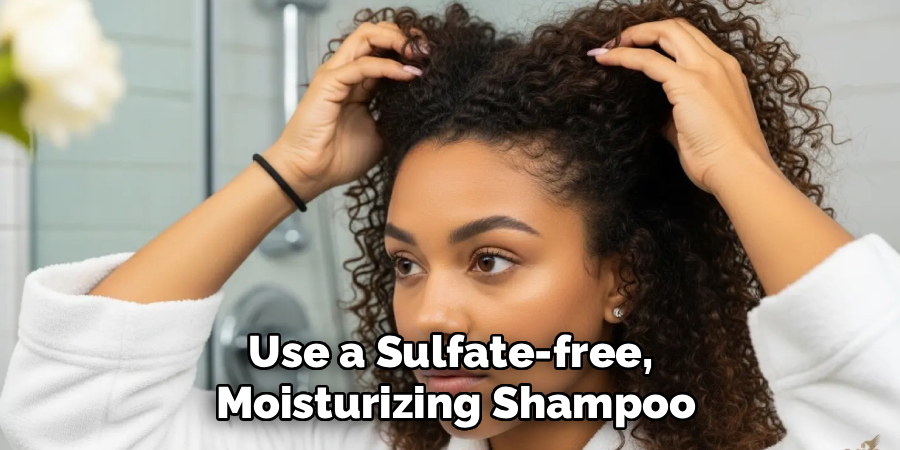Microlinks have become a beloved method for adding length and volume to natural hair, offering a seamless blend and incredible versatility without braids or glue. This strand-by-strand technique provides a flawless look, but the key to enjoying it long-term lies in the aftercare. Proper maintenance is not just about keeping the extensions looking good; it’s about protecting the health and integrity of your own natural hair underneath. Without the right routine, you risk tangling, breakage, and product buildup. This guide will provide clear, beginner-friendly instructions on how to maintain microlinks with natural hair, ensuring your style stays beautiful and your hair remains healthy.

Microlinks have become a popular choice for those looking to enhance their natural hair with added length and volume, all while maintaining a natural and versatile look. However, their success depends on how well you care for them. Proper aftercare not only ensures your extensions remain flawless but also protects your natural hair from unnecessary stress. By following the right techniques and incorporating healthy habits, you can achieve long-lasting results that keep both your extensions and your natural hair thriving.
Microlink Styling Tips
- Use Heat Protectants – When styling with heat tools like flat irons or curling wands, always apply a heat protectant spray to shield your microlinks and natural hair from damage caused by high temperatures.
- Opt for Low-Tension Styles – Avoid tight hairstyles that pull excessively on the microlinks, as this can cause unnecessary strain on your scalp and natural hair. Loose curls, soft waves, or simple half-up styles are great, gentle options.
- Brush with Care – Use a loop or wide-tooth brush specifically designed for extensions to detangle your hair. Start at the ends and work your way up to prevent tugging at the microlinks.
- Minimize Product Build-Up – Be mindful of the products you use. Opt for lightweight, sulfate-free formulas to keep your hair and microlinks free from excessive build-up, which can weaken the bonds over time.
- Schedule Maintenance Appointments – Regularly visit your stylist to check the condition of your microlinks and ensure they remain properly secured. This will also help address any potential issues before they escalate.
By incorporating these tips into your routine, you can keep your microlinks looking flawless while maintaining the health of your natural hair.

Step-by-Step Guide on How to Maintain Microlinks with Natural Hair
Step 1: Detangle Your Hair Before Washing
Before you even let water touch your hair, the most crucial first step is to detangle thoroughly. Start from the ends of the hair extensions and work your way up to the roots, using a wide-tooth comb or a detangling brush designed for extensions. Be gentle and patient, especially around the base of the links where your natural hair is attached. This process prevents small tangles from turning into major mats during the washing process. Neglecting this step can lead to severe knotting that puts stress on your natural hair and the microbeads, so never skip it.
Step 2: Wash Gently
When washing your hair, you need to be gentle and methodical. Stand upright in the shower and let the water run down your hair shaft; avoid flipping your head over, as this can cause tangling. Use a sulfate-free, moisturizing shampoo and apply it by smoothing it down your hair in a vertical motion. Do not scrub or agitate the hair in a circular motion. Focus on cleansing your scalp by gently massaging between the rows with the pads of your fingertips. Rinse thoroughly to ensure no shampoo residue is left behind, as this can cause scalp irritation.

Step 3: Always Follow Up
After shampooing, conditioning is vital for keeping both your natural hair and the extensions soft and manageable. Apply a moisturizing conditioner from the mid-lengths down to the ends of the hair, carefully avoiding the microbeads at the root. Applying conditioner directly to the links can cause them to become too slippery, leading to slippage and premature shedding of the extensions. Let the conditioner sit for a few minutes before rinsing it out completely with cool water to help seal the hair cuticle and add shine.
Step 4: Moisturize Regularly
Natural hair thrives on moisture, and having microlinks doesn’t change that. It’s important to keep your natural hair, especially your leave-out, properly moisturized to prevent dryness and breakage. Use a lightweight, water-based leave-in conditioner or moisturizing spray. Lightly mist your hair, focusing on your natural strands, and avoid applying heavy oils or creams directly on the beads. Heavy products can cause buildup and make the links more prone to slipping. A consistent moisturizing routine will keep your natural hair healthy and blended beautifully with the extensions.
Step 5: Separate the Bonds Daily
To prevent your roots from matting and tangling together, you must get into the daily habit of separating the bonds. This is a non-negotiable step in your maintenance routine. Gently run your fingers through your hair at the scalp, making sure each microlink and its attached strand of hair can move freely. This simple, two-minute process stops the shed hairs from wrapping around adjacent links and creating a web of tangles that can be very difficult and damaging to remove later on. Make this a part of your morning and nightly routine.
Step 6: Use Low Heat
While one of the benefits of microlinks is styling versatility, it’s important to minimize heat damage. When you do use heat tools like flat irons or curling wands, always apply a quality heat protectant spray first. Use the lowest effective heat setting and try not to pass the tool over the same section of hair multiple times. Never apply direct heat from a flat iron to the microbeads themselves, as this can damage the link and the hair held within it. Limiting your use of heat will preserve the quality of the extensions and the health of your natural hair.

Step 7: Protect Your Hair While Sleeping
Your nightly routine is just as important as your daytime one. To protect your hair from friction, tangling, and moisture loss while you sleep, you must secure it properly. Tie your hair into a loose, low ponytail or a loose braid. Then, wrap it in a silk or satin scarf or bonnet. Alternatively, you can sleep on a silk or satin pillowcase. This reduces friction between your hair and the pillow, preventing the extensions from getting tangled and helping to preserve your style while keeping your natural hair moisturized and protected.
Frequently Asked Questions (FAQ)
How Often Should I Wash My Hair with Microlinks?
It is generally recommended to wash your hair with microlinks once a week or, at most, once every ten days. Washing too frequently can strip your natural hair of its oils and may cause the links to slip, while not washing enough can lead to product buildup, scalp irritation, and tangling. Find a schedule that works for your scalp and lifestyle.
Can You Put Oil on Your Scalp with Microlinks?
Yes, you can, but it must be done carefully. If you have a dry or itchy scalp, you can apply a lightweight, natural oil like jojoba or tea tree oil. Use a dropper bottle to apply the oil directly to your scalp in between the rows, being careful to avoid saturating the microbeads themselves. Gently massage it in with the pads of your fingertips.
How Long Do Microlinks Last in Natural Hair?
With proper installation and diligent maintenance, a microlink install can last for up to 10-12 weeks. During this time, you will need to schedule a maintenance appointment with your stylist every 3-5 weeks. At this appointment, the stylist will tighten any links that have grown out and address any potential issues, which is crucial for the longevity of the style.
Why Is My Hair Tangling at the Root with Microlinks?
Tangling at the root is typically caused by shed hair. It’s natural to shed 50-100 hairs a day. When you have microlinks, these shed hairs remain trapped within the bead. If you don’t separate your bonds daily, these shed hairs can wrap around neighboring strands and links, causing matting at the scalp.
Can I Swim with Microlinks?
Yes, you can swim with microlinks, but it requires immediate aftercare. Before getting in the water, wet your hair with clean water and apply a leave-in conditioner. Braid your hair to minimize tangling. As soon as you get out of the pool or ocean, you must thoroughly wash and condition your hair to remove all chlorine or salt, which can be very damaging.

Conclusion
Microlinks are a fantastic investment for achieving the long, full hair of your dreams while still embracing your natural texture. However, the longevity of the style and the health of your own hair depend entirely on your commitment to a proper maintenance routine. By gently washing, consistently moisturizing, separating your bonds daily, and protecting your hair at night, you can prevent common issues like matting and breakage. Now that you have a clear understanding of how to maintain microlinks with natural hair, you can confidently enjoy your beautiful, versatile style while ensuring your own hair thrives underneath.
About the Author
Jane Hubbard is a passionate beauty expert with a wealth of experience in makeup, hair, and overall beauty techniques. After years of working as a hairdresser specialist, she followed her entrepreneurial spirit and started her own consultancy business.
Jane has always been driven by her desire to help others feel confident in their own skin, and she does this by sharing her knowledge, experiences, and practical beauty tips. Through her consultancy, she empowers individuals to embrace their unique beauty, offering tailored guidance that boosts both self-esteem and personal style.
Professional Focus
- Specializes in makeup, hairstyling, and beauty consulting.
- Provides personalized beauty advice, tips, and techniques to help individuals feel confident in their appearance.
- Dedicated to staying up-to-date with the latest industry trends and developments.
- Passionate about creating a comfortable and empowering experience for every client.
Education History
- University of Craft and Design – Bachelor of Fine Arts (BFA) in Woodworking and Furniture Design
- Woodworking Apprenticeships – Extensive hands-on training with skilled craftsmen to refine carpentry and furniture making techniques
- Online Courses & Masterclasses – Continued education in advanced woodworking techniques, design principles, and specialized tools
Expertise:
- Makeup artistry, hairstyling, and beauty consulting.
- Personalized beauty techniques to enhance confidence and self-expression.
- Educating clients on how to maintain their beauty routines at home.
